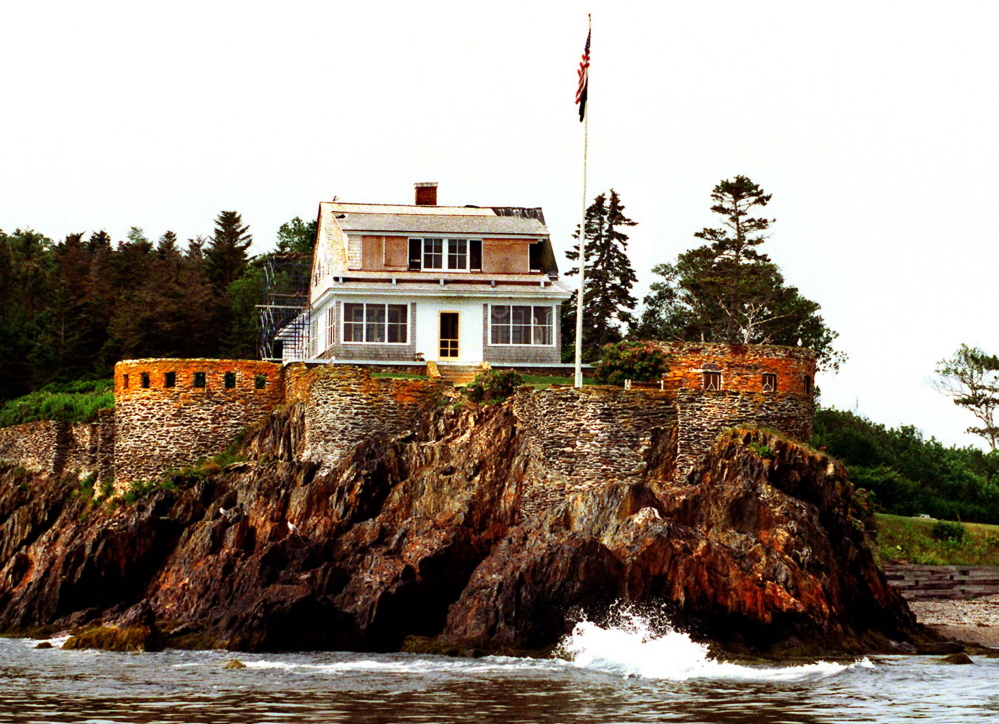The landmark designation of the Casco Bay island that was the home of Adm. Robert Peary, the Arctic explorer, will be recognized at a commemoration ceremony Saturday.
State officials plan to erect a plaque at noon noting the designation of Eagle Island in Harpswell as a National Historic Landmark, part of a series of events for the day including tours of Peary’s house and osprey watches.
Zane Wallace, manager of the Eagle Island State Historic Site, said the plaque noting the designation, which was announced last September, will be mounted on a 7-foot-tall piece of granite that park workers fished out of the water this year. He said park officials believe the granite slab was used as a mooring in the past. He also said the designation covers the whole island, not just Peary’s home.
Susan Kaplan, a professor of anthropology at Bowdoin College and director of the Peary-MacMillan Arctic Museum and Arctic Studies Center on the Brunswick campus, will give a keynote address that she said may challenge preconceived ideas about the Arctic explorer.
Peary is credited with being the first person to reach the North Pole, although the claim has been disputed. Kaplan said it may never be determined definitively, but she comes down on Peary’s side, saying most recent research suggests that Peary came within at least 5 miles of the pole on his 1909 exploration.
“Some people would say he didn’t get to the pole and others say, ‘Close enough,’” Kaplan said. “You’re on ice and the ice is moving away from the pole, so you can’t stick a pole there and say, ‘Here it is,’ because it will move.”
Kaplan said Peary was seen as very driven toward his goal of reaching the pole, which took five major expeditions over more than 20 years. But he was also quite open-minded for his time, she said, relying on Matthew Henson, a black man, as his principal aide on his explorations. He also adapted survival techniques from Inuits he encountered on his trips – and credited their contributions to his explorations – at a time when most of society viewed the Inuit people and their equipment as inferior.
In his social views, she said, Peary was “incredibly radical” compared to mainstream thinking in the early 1900s.
“He used the best of the West and the best of Inuit technologies, with a twist of his own creativity and innovation,” Kaplan said.
Kaplan said that in an introduction to a book written by Henson, Peary credited three races – whites, blacks and Inuits – with reaching the pole.
“What an incredibly radical thing to say,” Kaplan said.
Kaplan said people knew little of the far north and Arctic at the time. In fact, Peary helped determine that Greenland was an island and that the North Pole sat atop an ocean covered by a sheet of ice, rather than solid land. Peary’s explorations, she said, helped answer some of the questions about the region and made it easier for those who followed.
Wallace, the park manager, said people can reach the island via Marie L. Cruises, which has trips to Eagle Island from Harpswell at 10 a.m. and noon Saturday. The cost is $30 for an adult, according to the company’s website.
Atlantic Seal Cruises also stops at Eagle Island. It departs from Freeport at 9:30 a.m. and 1:30 p.m. Saturday. The cost of that trip is $35 for adults, the website said.
Wallace said the park has several admission rates, such as $4.50 for nonresident adults and $3 for resident adults. He said eight public moorings and an anchorage site are available for those who travel to Eagle Island on their own watercraft.
He said the island has four osprey nests with chicks that will soon be able to fly. He said visitors can view the ospreys and also take guided tours of Peary’s home. The park is open until 5 p.m., he said.
Send questions/comments to the editors.




Success. Please wait for the page to reload. If the page does not reload within 5 seconds, please refresh the page.
Enter your email and password to access comments.
Hi, to comment on stories you must . This profile is in addition to your subscription and website login.
Already have a commenting profile? .
Invalid username/password.
Please check your email to confirm and complete your registration.
Only subscribers are eligible to post comments. Please subscribe or login first for digital access. Here’s why.
Use the form below to reset your password. When you've submitted your account email, we will send an email with a reset code.